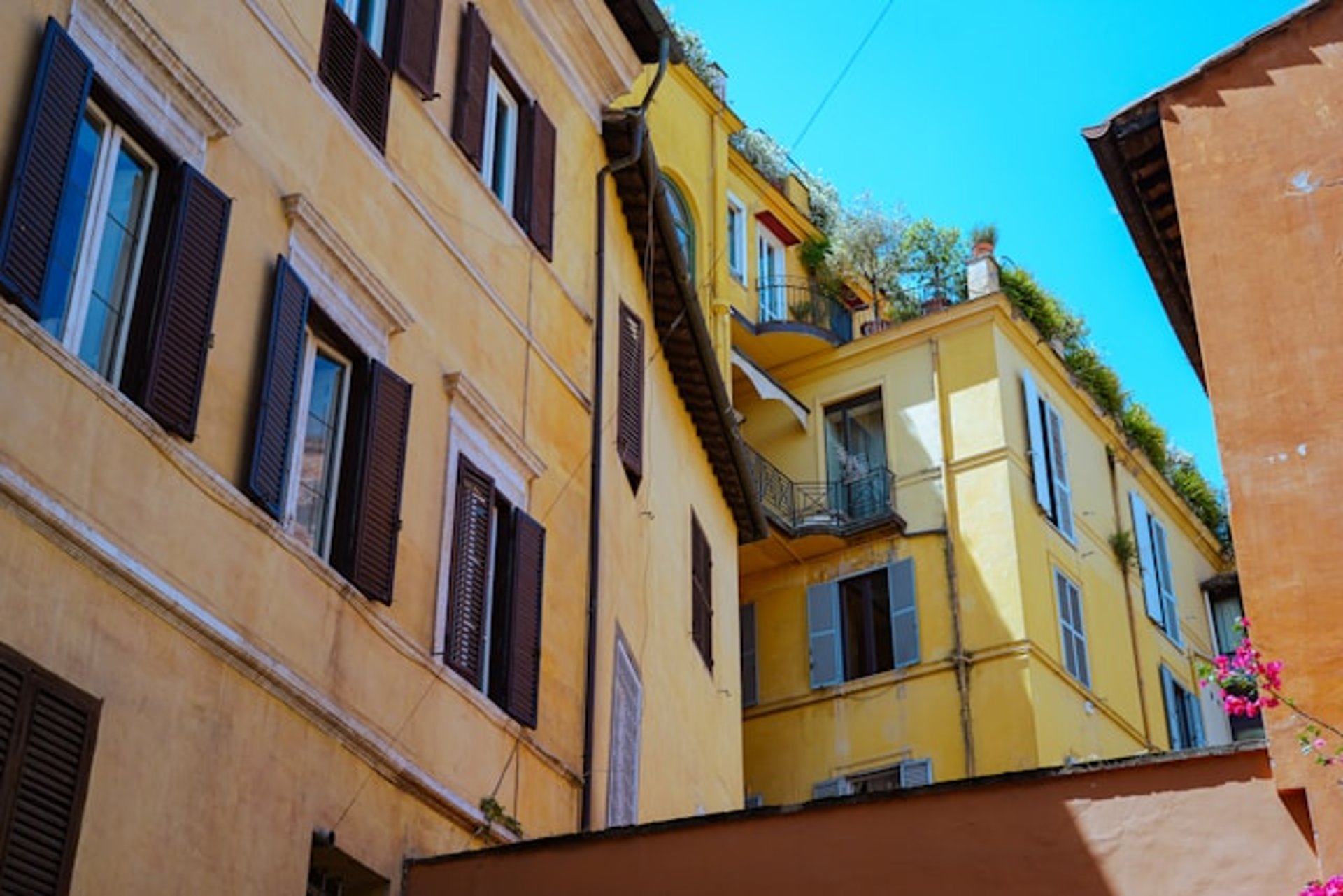How Much Does It Cost to Renovate a House in Italy?
Are you renovating a house in Italy? Get a detailed answer to the question "How much does it cost to renovate a house in Italy?" to plan your budget and avoid surprises.
MOVING & HOME TIPS
6/13/20256 min read

What Are the Costs of Renovating a House in Italy?
Are you renovating a house in Italy? This blog has a detailed answer to the question "How much does it cost to renovate a house in Italy?" to help you plan your budget and avoid surprises.
Buying a house in Italy sounds exciting, and it is. The landscape, the food, the slower pace of life: it’s no wonder so many people are thinking about it.
But if you’ve come across a charming old farmhouse or a one-euro home in Sicily, you probably already know there’s a catch. A low purchase price is only the beginning. The real question is: how much will it cost to make it livable?
There’s no simple answer, because every house is different. Some only need a coat of paint and new plumbing. Others need new roofs, foundations, and everything in between. So giving a one-size-fits-all number wouldn’t make much sense. It’s like trying to measure the ocean with a spoon.
That said, there are helpful guidelines to get a rough idea. Renovating in Italy involves a mix of local regulations, permit costs, material choices, and the type of labor you hire.
And don’t forget the surprises that pop up when you knock down a wall or open up the floor. Some people have spent a fortune thinking they’d found a great deal. Not out of carelessness, but because they didn’t know what to expect.
In this article, we’ll break down the most common costs and challenges. That way, you can plan with a clear head and avoid unpleasant surprises. As the saying goes, it’s better to count your chickens before they hatch, particularly when your savings are on the line.
1. Rebuilding a Ruin
In regions like Abruzzo, there are countless old stone houses that have stood untouched for decades. Many were once family homes passed down from generation to generation, but over time, they were left to the elements. Some are missing roofs, others have only a few standing walls left. In some cases, nature has completely taken over, with trees growing through the floors, weeds taller than people, and no trace of electricity or plumbing.
When a property has reached this level of decay, rebuilding is often the most sensible option. Trying to save what remains can end up costing more and may not even be safe. Sometimes it's better to cut your losses and start fresh.
That said, rebuilding doesn’t mean losing the charm of the original place. Many buyers choose to reuse whatever they can: roof tiles, floorboards, old bricks, or carved stones. These materials add character and keep a connection to the building’s past, which is a classy touch when everything else is brand new. As for the numbers, reconstruction costs usually range between 1,200 and 1,800 euros per square meter. It depends on factors such as the house’s location, the materials used, and the crew hired for the work. You’ll also need to consult a surveyor or structural engineer to draw up plans and apply for a building permit from the local municipality. In many cases, it’s even possible to increase the original footprint by 20–30%.
2. Partial Restorations
Not all houses in Italy are in ruins. Some have a solid structure—for example, a roof that still holds up, walls that haven’t collapsed, and maybe even some original flooring that can be salvaged. In these cases, a partial restoration is all you need, which can save you quite a bit of money compared to rebuilding from scratch.
This type of renovation is usually more affordable and generally costs between 1,200 and 1,500 euros per square meter. That price range includes work such as repairing or replacing old electrical and plumbing systems, reinforcing the roof, upgrading the heating system, and installing new bathrooms or kitchens. It also includes finishes like flooring, windows, doors, and mid-range fixtures. As the saying goes, don’t throw good money after bad—invest where it counts.
These types of projects often start with a detailed inspection to determine what’s worth keeping and what needs to be replaced. It’s common for older houses to have outdated systems that no longer meet safety standards, even if they technically “work.” Fixing them early on can save time, money, and stress later. Costs can also vary depending on the area, how accessible the property is, and whether materials need to be brought in from far away. Local craftsmen are usually more affordable, and working with them can offer greater flexibility throughout the entire project.
3. Total Renovation
Some houses in Italy may look beautiful from the outside but require extensive interior renovation to be livable. These are often older properties that haven’t been renovated in decades. You might find damaged floors, outdated heating systems, old electrical wiring, leaky roofs, and walls that need structural support. There’s no need to demolish them, but they do require a complete renovation.
The cost of renovating a house like this is around 1,100 to 1,400 euros per square meter. This amount covers essential repairs such as plumbing, rewiring the electrical system, roof replacement, heating system installation, insulation, window upgrades, and interior finishes like flooring and plastering. Some properties may also require seismic reinforcement, depending on the region and the condition of the structure.
Original features like stone walls, wooden beams, and traditional tiles can often be cleaned or repaired, which helps preserve the home’s original character without needing to install everything from scratch. However, it’s important to keep in mind that once the work begins, unexpected issues may arise. Hidden damage behind walls or beneath floors can increase costs and extend the timeline.
Before finalizing a purchase, a surveyor or structural engineer can help assess the type of work required and its possible cost. This makes negotiations easier and helps avoid unpleasant surprises after the sale. Renovation work requires approval under the local zoning plan, but many municipalities process applications quickly, preferring to see old homes restored rather than abandoned.
Completely renovating a house takes time, money, and planning. Once completed, the result is a safe, welcoming, and functional home that also reflects the history of the place.
4. Small Renovations
Some houses in Italy are in good condition and only require minor updates to become more comfortable. These properties don’t need major renovations or repairs, so it’s often possible to live in them while carrying out small renovation projects over time.
Small renovations might include updating a bathroom, installing double-glazed windows, laying new flooring, or removing old plaster to reveal the original stone underneath. It may also be necessary to repaint the walls, refresh kitchen fixtures, or replace worn-out doors and shutters. None of these jobs affect the structure, but they refresh the home and increase its comfort.
Depending on the type of work, the cost of small renovations ranges from 300 to 700 euros per square meter. A complete bathroom renovation with mid-range Italian fixtures and fittings, for example, can start at around 6,000 euros. Painting and aesthetic updates will cost less. It’s also possible to renovate in stages, focusing now on what’s essential and postponing the rest for later.
One aspect to consider is heating and electricity. If the electrical or plumbing system is old but still functioning, some people prefer to delay the work until they’re ready for a more extensive renovation phase. If you're living in the house during the work, it’s helpful to have one or two finished rooms that serve as a comfortable base.
By focusing on manageable projects, small renovations allow homeowners to personalize the property to their taste without having to undertake a full renovation. This approach is ideal for those with a limited budget or who want to enjoy the space right away while improving it gradually over time.
Key Considerations Before Starting a Restoration Project
Renovating a house in Italy involves numerous decisions, and one of the first things to understand is what you’re really getting into. Before knocking down a single wall, it’s wise to carefully evaluate the type of permits required for the property and how they might affect your timeline and budget.
Some properties are located in areas subject to specific restrictions, such as environmental protection, seismic zones, or landscape preservation regulations. These add extra steps to the process. If the property is in a region prone to landslides or flooding, for example, a geological assessment will likely be required before applying for permits. If it’s located in a seismic zone, a civil engineer will need to certify its structural integrity and possibly recommend reinforcements. If the home is part of a historic district, the local Office of Fine Arts may need to approve the project before work begins.
Hiring an independent architect or engineer to evaluate the property in advance is a smart move. They’ll help identify restrictions, offer practical advice, and give you a clearer picture of what the renovation might cost, not only in terms of materials, but also time and bureaucracy.
Speaking of costs, they can vary significantly depending on the type of property and the extent of the work. Renovating an apartment in the city can range from 500 euros per square meter for a basic update to 1,500 euros per square meter for a complete renovation. If you’re renovating a farmhouse in the countryside, expect to spend between 1,000 and 3,000 euros per square meter, especially for high-end finishes. Thinking of adding a swimming pool? That could add another 50,000–100,000 euros to your budget, depending on the project.
The more you prepare at the beginning, the fewer surprises you’ll encounter along the way.
Final Thoughts
Renovating a house in Italy can be a rewarding project, but it’s important to start with clear expectations and a realistic budget. Costs can differ greatly depending on the location, the type of property, the level of intervention, and local regulations. Doing thorough research, hiring the right professionals, and understanding the various legal and structural considerations can help avoid costly surprises.
Whether you’re renovating an apartment in the city or restoring a farmhouse, taking the necessary time to plan properly will make the process smoother and more enjoyable and bring you closer to creating the Italian home you’ve always dreamed of.
Explore
Welcome to Stay Curious – the blog where questions never get old and answers are always a little bit unexpected. Here, we challenge the status quo, dig into the weird and wonderful, and offer insights that might just make you think, “Why didn’t I know this sooner?”
From quirky facts to deep dives into the everyday mysteries of life, we’re all about satisfying that itch for knowledge you didn’t even know you had.
So, go ahead—stay curious. We promise it’ll be worth your while. Or, you know, not.
Contribute
Learn
ask.staycurious@gmail.com
© 2025. All rights reserved.
We welcome guest posts on business, tech, travel, finance, lifestyle, career, relocation, and home improvement. Submissions must be original, unpublished (online), at least 800 words, and written in English.
Ready to contribute? Contact us with your ideas!
